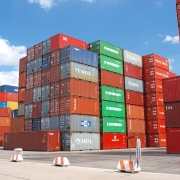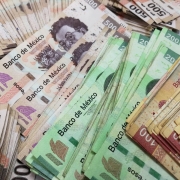What caused the Asian Financial Crisis in 1997?
Topic of Study [For H2 History Students]:
Paper 2: Economic Development after Independence
Section B: Essay Writing
Theme II Chapter 2: Asian Financial Crisis
What exactly is the ‘East Asian Crisis’?
In July 1997, the markets in East and Southeast Asian were affected by a financial meltdown that began in Thailand. Due to a mix of factors, such as financial speculation and inadequate regulatory measures, the Thai government was forced to float the baht. This caused market pessimism, which led to the outflow of capital. In view of the inter-connected markets within the Southeast Asian region, the economic problems in Thailand began to spread to other neighbouring countries, like Thailand. This was known as a ‘financial contagion’.
1. Unregulated financial liberalization
One possible factor for the Asian Financial Crisis was the unregulated liberalization. Partially, this was the result of the increased liberalization of the financial sector in the 1980s. As foreign investments were welcomed as major sources of economic growth, there were minimal regulations to stem the flow of capital.
As such, the sustained economic growth boosted market sentiments, thereby creating the optimistic outlook that Southeast Asia was a potential for future growth. Thus, foreign investors funded investment activities in the region. However, financial liberalization exposed several weaknesses.
In Thailand, the Bangkok International Banking Facility (BIBF) enabled banks and finance companies to access short-term credit with low interest rates. The credit was lent to Thai borrowers to finance long-term projects with high interest rates. Therefore, the ease of credit access resulted in the expansion of BIBF loans that amounted to nearly $115 billion baht.
2. The shortcomings of a fixed exchange rate system
The second contributing factor relates to the use of a fixed exchange rate system in some of the SEA economies. A fixed exchange rate system meant that governments could determine the external value of money. Currency stabilization was an ideal consideration as it raises market confidence to promote investment and trading activities.
However, a large pool of foreign reserve was needed in order for governments to intervene in the foreign exchange (i.e. ‘forex’ in short) market and maintain the exchange rate.
Initially, the Thai baht was pegged to the American dollar (USD) at 25 baht : 1 USD. Yet, the inability to maintain the currency value had left the economy vulnerable to speculative attacks that began in November 1996. Thailand’s reserves of US$39 billion declined to US$2 billion by June 1997.
Eventually, the inability to maintain the currency peg led to the eventual floating of the baht on 2 July 1997, thus losing 17% of its value relative to the USD. Consequently, there was a plunge in investor confidence, resulting in the withdrawal of foreign capital from the regional markets.
3. Speculative attacks
The third contributing factor relates to foreign currency speculation. Short-term capital flows created exchange rate instability, which was exacerbated by market pessimism. Therefore, the outflow of capital resulted in currency depreciation.
In Thailand, foreign investors sold their baht, causing a sharp fall in the currency value. By end 1997, the baht lost 80% of its value relative to the USD. There were lingering perceptions that the neighbouring economies were also susceptible to market volatility.
Therefore, this dampened investor confidence, resulting in the subsequent outflow of capital in other economies, like Indonesia. By February 1998, the Indonesian rupiah lost 76% of its value relative to the USD.
How did the financial crisis affect the Southeast Asian economies?
In general, the massive currency devaluation led to a significant economic downturn that hampered the development of many economies in Southeast Asia, including Singapore and Indonesia.
With currency depreciation, some of these economies experienced higher unemployment and inflation rates. For instance, Indonesia was adversely affected by the Thai financial crisis. The unemployment rate in Indonesia surged beyond 6% in 1999. Gross Domestic Product (GDP) growth rate was at -15% in 1998. In Malaysia, the GDP growth rate was at -5.8% in the same year.
What can we learn from this case study?
Consider the following question:
– How far do you agree that the Asian Financial Crisis of 1997 was the result of currency speculation? [to be discussed in class]
Now that you have examined the possible contributing factors that gave rise to the Asian Financial Crisis, it is important to apply this knowledge by answering similar practice questions. You can also join our JC History Tuition. We provide additional learning resources, such as summary notes, essay outlines and case study materials.
The H2 and H1 History Tuition feature online discussion and writing practices to enhance your knowledge application skills. Get useful study notes and clarify your doubts on the subject with the tutor. You can also follow our Telegram Channel to get useful updates.
We have other JC tuition classes, such as JC Math Tuition and JC Chemistry Tuition. For Secondary Tuition, we provide Secondary English Tuition, Secondary Math tuition, Secondary Chemistry Tuition, Social Studies Tuition, Geography, History Tuition and Secondary Economics Tuition. For Primary Tuition, we have Primary English, Math and Science Tuition. Call 9658 5789 to find out more.











